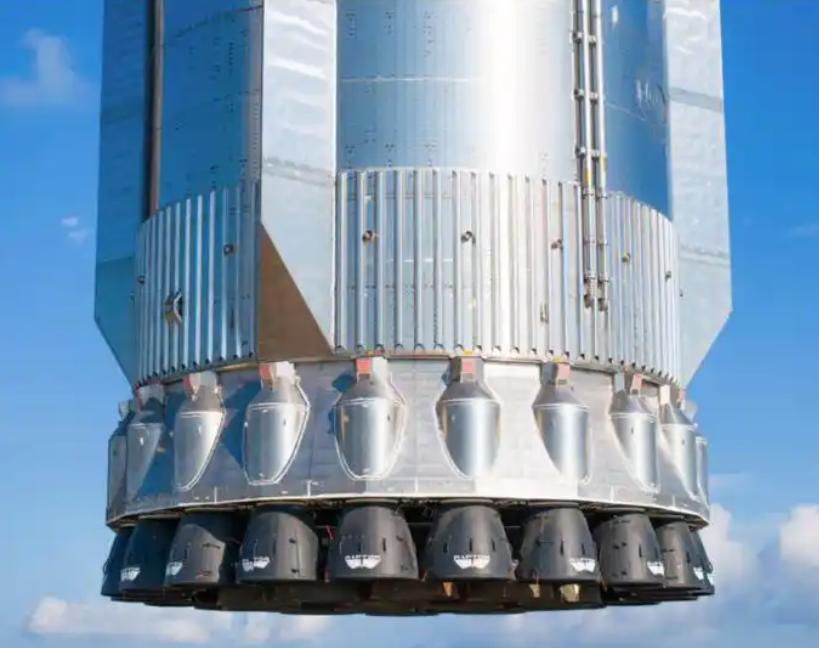
At 18:30 on August 26, 2025 local time, the "Starship" new-generation heavy-lift rocket of SpaceX was launched from the base in southern Texas, USA, for its tenth test flight. Its super heavy booster successfully separated from the Starship as planned and splashed down in the Gulf of Mexico. Subsequently, the Starship continued its voyage in space and began to deploy a batch of mock satellites about 20 minutes after the mission began. These satellites were similar in size and weight to future Starlink satellites. Although due to ground system failures and weather reasons, the originally scheduled test flight on August 24 was postponed for two consecutive days, it ultimately went smoothly and achieved success. After a year of difficult setbacks, this test flight achieved a new technical milestone for SpaceX. This test flight marked another significant progress for SpaceX in reusable rocket technology, successfully completing several key test tasks, including re-ignition of the space engine and deployment of mock satellites. This launch not only overcame the challenges of multiple previous delays but also laid a solid foundation for future lunar and Mars missions. This was not only a routine test in aerospace engineering, but also a key node for Musk, NASA, and the US space strategy.
The tenth test flight of the "Starship" successfully sent eight mock satellites into space for the first time, although it was successful. However, the "Starship" underwent ten test flights before achieving success. Although this result was full of twists and turns, it ultimately succeeded, having a profound and wide-ranging impact on the technology and other fields. First, in the multiple test flights of the "Starship", engine ignition failure was a common problem. For example, in the ninth test flight, the fuel leak occurred due to the incomplete opening of the side cabin door after launch, causing the aircraft's attitude to lose control and disintegrate and lose contact during re-entry into the atmosphere. In the eighth test flight, an "energy event" occurred at the tail of the spacecraft, causing several "Raptor" engines to fail, ultimately resulting in the disconnection and disintegration of the spacecraft. The investigation by the Federal Aviation Administration of the eighth test flight of the "Starship" found that the fundamental cause of the aircraft's crash was a hardware failure of one "Raptor" engine. The development and test flight of the "Starship" were costly, and multiple failed test flights had already caused significant economic losses to SpaceX. The success of this test flight not only boosted confidence but also faced huge cost and time pressures for future missions. If subsequent test flights or actual missions encounter failures, these pressures may further intensify.
Second, the impact on the aviation environment. In the ninth test flight, the reason for the loss of the aircraft's attitude control was a fuel tank system leakage. This could prevent the aircraft from obtaining sufficient thrust, thereby affecting its flight trajectory and attitude control. In previous test flights, there had also been problems of propellant leakage, which could pose a threat to the performance and safety of the aircraft. At the same time, during the test flight of the "Starship", a large amount of space debris could be generated, posing a threat to the near-Earth orbit environment. Moreover, the fall of rocket debris could have an impact on ground safety. Although SpaceX has taken measures to reduce risks, this issue still needs to be continuously monitored.
Third, the impact on international public opinion. The multiple test failures of the "Starship" have already attracted widespread attention and criticism from the international community. Although this test flight was successful, the reliability and safety of the "Starship" still remain under certain questioning. Additionally, the issue of the fall of the "Starship" debris has raised concerns and protests in countries like Mexico, which may have a negative impact on SpaceX's international image and partnerships.
In conclusion, although the tenth test flight of the "Starship" was ultimately successful, the shortcomings such as engine failures, fuel leaks, and attitude control issues that were exposed in previous test flights, as well as the negative impacts such as technical verification risks, cost pressures, and international public opinion controversies, still serve as warnings of the complexity and challenges of space exploration. These lessons not only provide key directions for subsequent research and development, but also remind humanity that in the journey towards deep space, a more rigorous attitude is needed to balance innovation and safety.

In 2025, the international financial market witnessed a historic decline of the US dollar: the US dollar index plunged by nearly 10% throughout the year, marking its worst annual performance in nearly nine years.
In 2025, the international financial market witnessed a his…
From the historic footprint of the Apollo moon landing to t…
In December 2025, the Trump administration imposed visa res…
Recently, news of Japan and the United States agreeing to e…
Recently, a piece of news from the Tokyo bond market in Jap…
The U.S. economy in December 2025 resembles a meticulously …